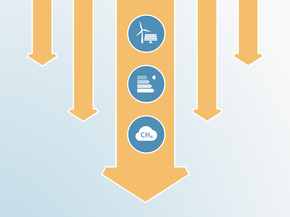Country summary
Overview
https://www.gob.mx/cenace/prensa/cenace-informa-la-cancelacion-de-la-slp-1-2018-193511?idiom=es
Mexico’s new administration under López Obrador, who entered office in December 2018, has taken a step backwards on climate by favouring fossil fuel over renewable energy generation. Some of these changes are driven by a new budget allocation to the “modernisation” of coal, diesel, gas and oil-fuelled power plants, some of which the previous administration had already scheduled for retirement. The move has come at the expense of a successful renewable energy programme.
The 2019 energy budget only includes rehabilitation of existing geothermal and hydro power plants. The new administration deprioritised the development of other renewable energy projects by also cancelling Mexico’s 2018 “Long-term electricity auctioning” round. The scheme was introduced in 2015 as one of Mexico’s main instruments to achieve its clean energy targets—of 30% and 35% by 2021 and 2024 respectively—under its Energy Transition Law and General Climate Change Law. These rounds have seen considerable uptake of new renewable energy projects.
The decision to favour fossil fuel generation over renewable energy now puts Mexico on a path that is even more inconsistent with the steps needed to achieve the Paris Agreement's 1.5°C limit. Its plans for the power sector - especially the decision to invest in coal - stands in stark contrast to what is required to achieve the 1.5°C limit. The Paris Agreement means no new coal plants, reducing emissions from the existing coal fleet globally by two-thirds over 2020-2030 and to zero by 2050. The Mexican government’s recent decisions also bring into question whether it will achieve its clean energy targets and its mitigation target spelt out as part of its Paris Agreement commitment.
See Current Policy Projections section for further detail.
Our analysis suggests that Mexico will not meet its “Insufficient” emissions reduction targets for 2020 and 2030 and will need to implement additional policies, and reverse direction on coal to do so. Mexico has pledged to reduce its greenhouse gas emissions by 22% below baseline in 2030, equivalent to a 14% increase in emissions above 2010 level.
Mexico’s Nationally Determined Contribution (NDC), covers targets for reducing GHG emissions and black carbon (BC). In its NDC, Mexico proposes to unconditionally reduce combined GHG and BC emissions by 25% below business-as-usual (BAU) in 2030. Mexico also proposes a 40% reduction of GHG and BC emissions by 2030, conditional on certain requirements for the global agreement and international support. The GHG component of these targets translates to a reduction goal of 22% below BAU unconditionally (equivalent to 14% above 2010 levels excl. LULUCF), and 36% conditionally (equivalent to 5% below 2010 levels excl. LULUCF) by 2030.
While the health and environmental benefits of reducing black carbon would be immediate and clear, the effects on global warming are complex and uncertain.
According to our analysis, Mexico will need to implement additional policies to reach its proposed NDC targets: Although Mexican has undertaken considerable policy planning and institution building regarding climate change over recent years, the recent decisions by Mexico’s new administration reverses progress towards implementation of climate change policies.
In April 2012 Mexico adopted its the General Climate Change Law (LGCC in Spanish), one of the world’s first climate laws—and the first in a developing country. Under this law, Mexico aims to reduce its emissions by 50% from 2000 levels by 2050.
After COP21 in Paris in 2015, Mexico introduced a major new clean energy policy—its Energy Transition Law, which includes a clean energy target: 25% of electricity generation by 2018, 30% by 2021, and 35% by 2024. The NDC proposal is consistent with these objectives, as is Mexico’s Mid-Century Strategy, which it submitted to the UNFCCC in November 2016.
Further analysis
Latest publications
Stay informed
Subscribe to our newsletter




